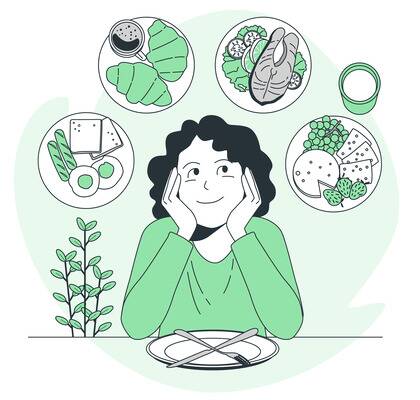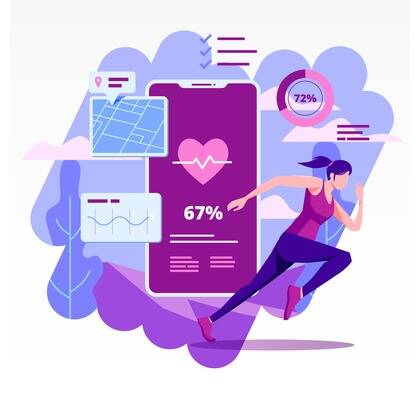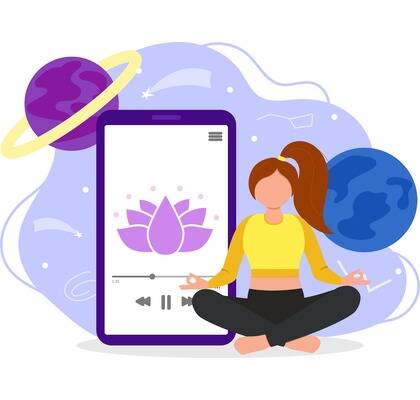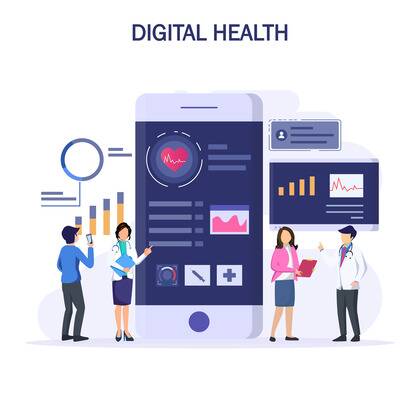In today’s fast-paced world, where technology plays a significant role in our lives, maintaining wellness has become increasingly important. The digital age has revolutionized the way we live, work, and interact, presenting both opportunities and challenges to our well-being. This article explores the concept of wellness in the digital age and provides valuable insights on how individuals can prioritize their health and balance their digital lifestyles.
Introduction: Embracing the Digital Age
The digital age has ushered in unprecedented advancements, providing us with instant access to information, connectivity, and convenience. However, this constant immersion in the digital realm has brought about significant changes in our lifestyles and well-being. As we navigate this technology-driven era, it is crucial to strike a balance between harnessing the benefits of digital tools and prioritizing our wellness.
Understanding Wellness in the Digital Era
Wellness in the digital age encompasses various dimensions, including physical, mental, and social well-being. It involves maintaining a healthy lifestyle, managing stress, fostering positive relationships, and embracing digital resources that contribute to overall wellness. As we adapt to the digital era, it is vital to be mindful of the potential impact on our well-being and take proactive steps to ensure a healthy balance.
The Impact of Digital Technology on Physical Health
The widespread use of digital devices and sedentary behaviors associated with prolonged screen time can have adverse effects on physical health. Issues such as eye strain, musculoskeletal problems, and obesity are common concerns in the digital age. To mitigate these risks, it is essential to practice regular exercise, maintain good posture, and take breaks from prolonged digital engagement.
Nurturing Mental Well-being in a Digitally Connected World
The digital age has brought numerous benefits to mental well-being, such as access to mental health resources, online therapy, and support communities. However, it has also presented challenges like information overload, digital distractions, and social media’s impact on self-esteem. Prioritizing mental well-being involves setting boundaries, practicing mindfulness, and seeking digital tools that promote mental health.
Take care of your body. It’s the only place you have to live in the digital age.
– Jim Rohn
Striking a Balance: Managing Screen Time and Digital Detox
Managing screen time is crucial for maintaining wellness in the digital age. While digital devices offer immense value and convenience, excessive usage can lead to addictive behaviors, sleep disturbances, and reduced productivity. Setting limits on screen time, practicing digital detox, and engaging in offline activities can help restore balance and promote overall well-being.
Enhancing Social Connections in the Digital Age
Digital platforms have transformed the way we connect with others, allowing us to build and maintain relationships regardless of physical distance. However, it isimportant to recognize the potential impact of digital interactions on our social well-being. Striving for meaningful connections and prioritizing face-to-face interactions can help foster deeper relationships and combat feelings of isolation that may arise in the digital age.
Digital Tools for Health and Wellness
The digital age has given rise to a multitude of tools and applications designed to support health and wellness. From fitness tracking apps to meditation and mindfulness platforms, these resources offer personalized guidance and support for individuals seeking to enhance their well-being. Exploring and utilizing these digital tools can empower individuals to take control of their health and make informed choices.
The Role of Artificial Intelligence in Promoting Wellness
Artificial Intelligence (AI) has emerged as a powerful tool in the realm of wellness. AI-driven technologies can analyze vast amounts of data, provide personalized recommendations, and assist in disease detection and prevention. Integrating AI into wellness practices can enhance efficiency, accuracy, and accessibility, ultimately leading to improved health outcomes.
Wellness Apps and Wearable Technology
Wellness apps and wearable technology have become increasingly popular in the digital age. These devices and applications track various aspects of health, such as physical activity, sleep patterns, and nutrition. By monitoring and analyzing data, individuals can gain insights into their habits and make positive changes to support their well-being.
Cybersecurity and Privacy Concerns in the Digital Age
As we embrace the digital age, it is crucial to address cybersecurity and privacy concerns. The vast amount of personal information shared online raises the risk of data breaches and identity theft. Being proactive in safeguarding personal information, using secure networks, and practicing good digital hygiene are essential to protect privacy and maintain a sense of security in the digital realm.
Cultivating Mindfulness and Stress Reduction in the Digital Era
The constant connectivity and information overload in the digital age can contribute to heightened stress levels. Cultivating mindfulness practices, such as meditation and breathing exercises, can help individuals navigate the digital landscape with a greater sense of calm and focus. Prioritizing self-care, setting boundaries, and engaging in activities that promote relaxation are key to managing stress in the digital era.
Promoting Healthy Sleep Habits in the Digital Age
The use of digital devices before bedtime can disrupt sleep patterns and quality. The blue light emitted by screens can interfere with the production of melatonin, a hormone essential for sleep regulation. Establishing a bedtime routine, limiting screen time before bed, and creating a sleep-friendly environment can contribute to restful and rejuvenating sleep in the digital age.
Creating Digital Boundaries for Improved Wellness
Establishing boundaries in the digital realm is crucial for maintaining overall wellness. This includes setting limits on screen time, managing notifications, and creating designated technology-free zones or times. By defining boundaries, individuals can reclaim control over their digital lives and ensure a healthy balance between the virtual world and real-life experiences.
Prioritizing Self-Care and Setting Realistic Goals
In the digital age, it is easy to become consumed by the demands and distractions of technology. However, prioritizing self-care and setting realistic goals are essential for maintaining wellness. This includes engaging in activities that bring joy, practicing self-compassion, and recognizing the importance of personal well-being in a digitally connected world.
Conclusion
Wellness in the digital age requires a proactive approach to navigate the opportunities and challenges presented by technology. By prioritizing physical, mental, and social well-being, managing screen time, utilizing digital tools mindfully, and establishing healthy boundaries, individuals can thrive in the digital era while maintaining their overall wellness.





































